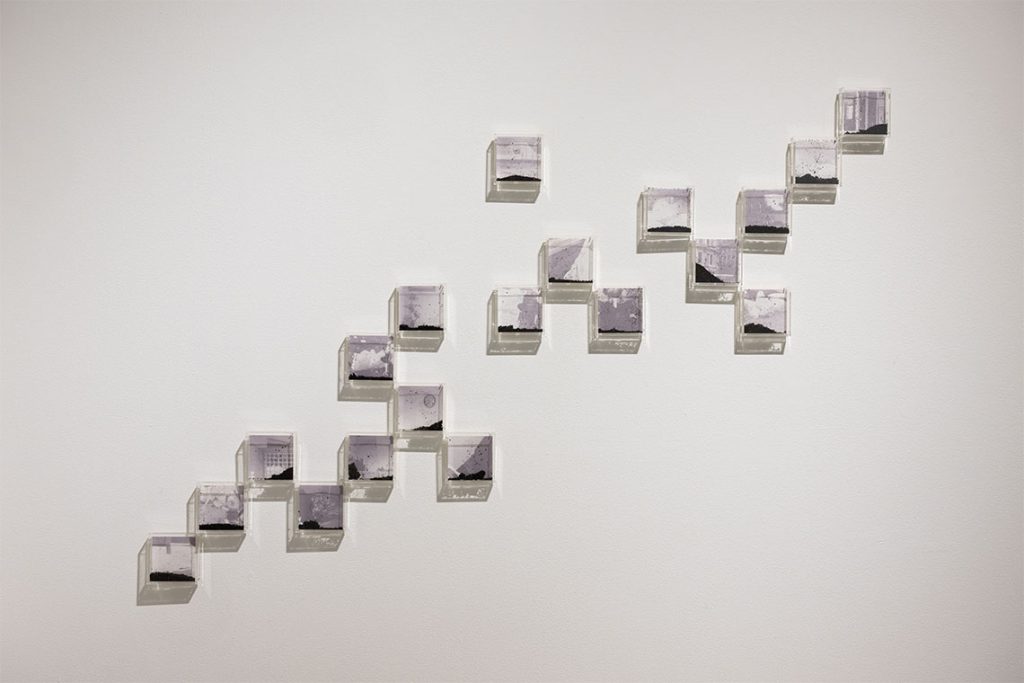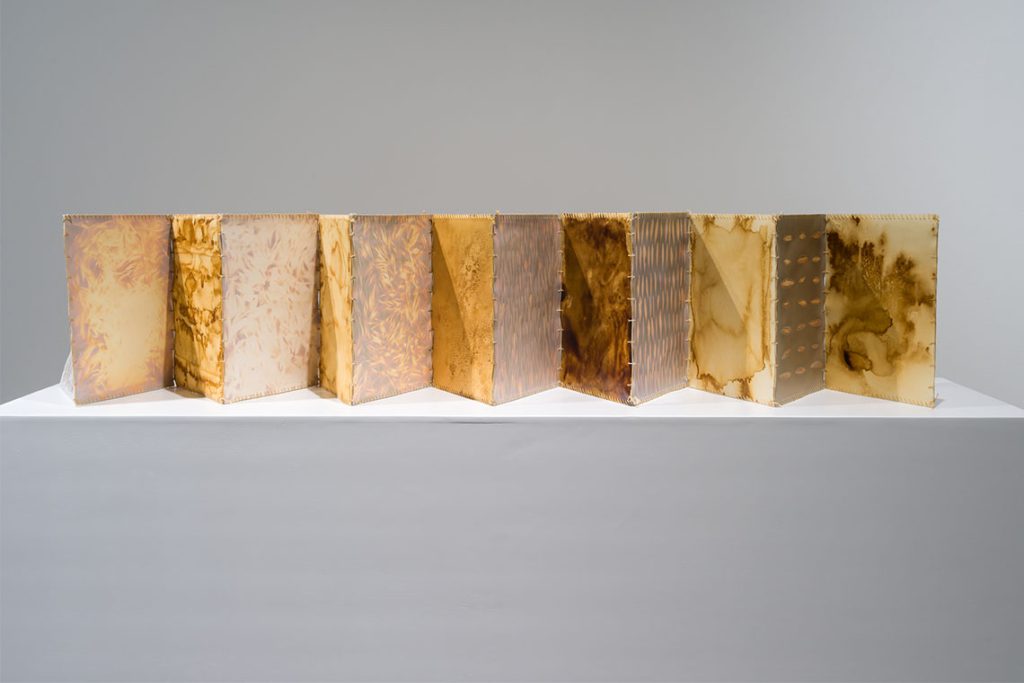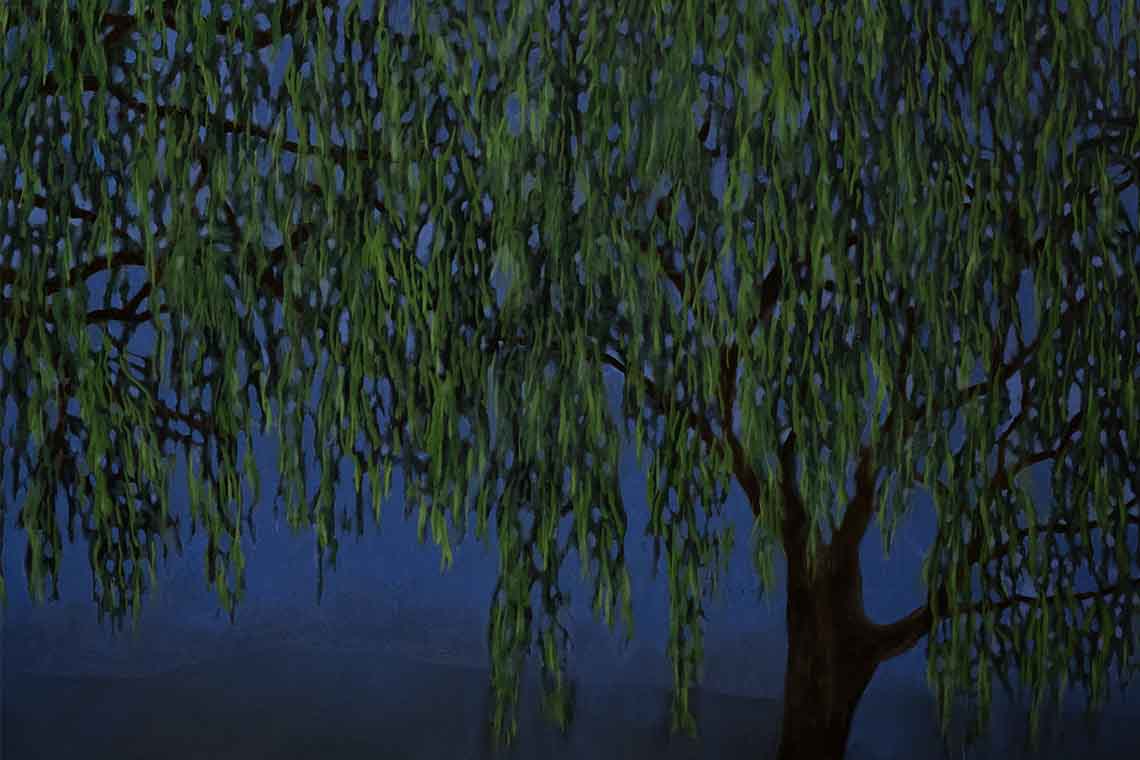Gallery Isabelle unveils I Wish to Be Happy, I Want to Be Yellow, a group show that invites visitors into an enchanting symphony of art across the intimate realms of nature’s raw power.
Stepping into the exhibition I Wish to Be Happy, I Want to Be Yellow feels like entering a realm where the boundaries between self and nature dissolve into a tapestry of vivid sensations. The thoughtful curation by Jad Karam at Galerie Isabelle enhances this immersive experience, guiding the audience through the works of an eclectic group of artists – Mohammad Alfaraj, Aminah Al Huqail, Dalia Baassiri, Richi Bhatia, Jumairy, Tamara Kalo, Adrian Pepe and Alia Zaal – who each contribute unique perspectives on our intricate relationship with nature.
On entering the exhibition space, my gaze was irresistibly pulled upward to Adrian Pepe’s Nervous Bodies(2024). This installation commands the room with its sheer scale, stretching toward the ceiling like an elaborate translucent veil to invite engagement with a world where the anatomical intricacies of both human and animal bodies intertwine in an exploration of existence itself. The playful and performative essence of Pepe’s work transforms what could be a stark commentary into a haven where these two worlds – human and animal – merge, deconstruct and ultimately heal one another. Yet, amidst this flow, one figure has broken free from the expected path, its escape attempt failing dramatically. Lying on the floor, limbs splayed in a tragic tableau, it evokes a visceral response. This moment of resistance starkly contrasts with the meticulous order of the other silhouettes, embodying the fragility and vulnerability of existence.
Uncertain Past, Uncertain Future (2013) by Jumairy captivates with its haunting presence. Twenty prints, delicately arranged, stand sentinel alongside piles of dead ants – an unsettling yet profound juxtaposition. At first glance, I was drawn by what appeared to be a scatter of black seeds, dark and enigmatic against the backdrop of the prints. Yet, as I leaned closer, reality shifted to reveal the startling truth: these are not seeds, but dried ants, their stillness a poignant echo of lost life. This unexpected revelation deepens the work’s impact, evoking a visceral unease. The lifeless insects symbolise the fragility of memory, their quiet decay mirroring the distortion inherent in our recollections. Each print whispers of how easily memories can fade, much like the remnants of these once-vibrant creatures.

Photography by Cedric Rebeiro. Image courtesy of the artist and Gallery Isabelle, Dubai
As I stood before Tamara Kalo’s Olive Leaves Memories (2024), the folding book resonated deeply, a heartfelt homage to the olive tree set against the backdrop of violence that shatters what ought to be a sacred harvest, the artist explains. Each page unfolds like a memory, revealing photograms created from olive leaves – ephemeral yet enduring, they capture the essence of the tree and its silent witness to generations. The recycled plastic encasing the leaves speaks to the collaborative relationship between Kalo and nature, a reminder of the fragility and resilience of life. This work called me to listen – to the land, its memories and the ancestral significance of the olive tree.
In the same intimate room, Aminah Al Huqail’s Layers of Skin Strata (2023) beckons viewers to engage with the concept of papermaking through an innovative lens. Crafted from discarded chickpea skins – the remnants of communal hummus preparation – this work echoes the communal rituals that pulse at the heart of Arabic culinary traditions. The bold hues and textures of the skins, layered and transformed into paper, tell a story of collaboration and conversation that often unfolds around the dining table. Here, the act of peeling moves beyond being just a task; it becomes a dialogue, an echo of shared experiences.
While the intimate space has the potential to foster a compelling dialogue between the artworks and their surroundings, the presence of shelving units filled with books lining the corner walls introduces an unexpected layer of complexity. From a preliminary perspective, I felt unsure whether these shelves were part of the exhibition or simply a permanent fixture of the gallery. This confusion pulled me in multiple directions, oscillating between engaging with the art and pondering the relationship between the pieces and the literature.
As I wove my way through the exhibition, I was drawn to Alia Zaal’s captivating works that seize attention with their lively colours and expressive strokes. Immersed in the night landscapes of Abu Dhabi and Dubai, her paintings capture the essence of the ghaf trees as symbols of resilience, poised between the realms of reality and dreams. Zaal’s lyrical approach invites contemplation, urging reflection on the personal and public narratives that these magnificent trees embody. In the context of the exhibition, her work feels like a vibrant heartbeat, infusing the space with a sense of wonder and depth that lingered long after I moved on.

Photography by Atamash Urooj. Image courtesy of the artist and Gallery Isabelle, Dubai
Assemblage Bed One (2014–24) emerges as a striking focal point, inviting viewers into a realm where decay and beauty coexist in a delicate dance. Displayed on a table-bed that feels both inviting and unsettling, this work encourages people to engage with its raw assembly. It explores the hidden forces that shape our relationship with food, nature and mortality, featuring an array of found objects – a wilting rose and dental plaster – to tell a story of transformation and resilience. Each element, though decaying, is punctuated by pearl pins that add an almost ceremonial grace to the assemblage.
As I concluded my journey through I Wish to Be Happy, I Want to Be Yellow, I found myself enveloped in a rich weave of interconnectedness. Each artist whispers their own truths about our bond with nature and existence. Together, their creations challenge our perceptions and inspire a deeper reflection on the fluidity of existence, leaving a lasting impression that resonated long after I exited the gallery.
I Wish to Be Happy, I Want to Be Yellow runs until 26 October



